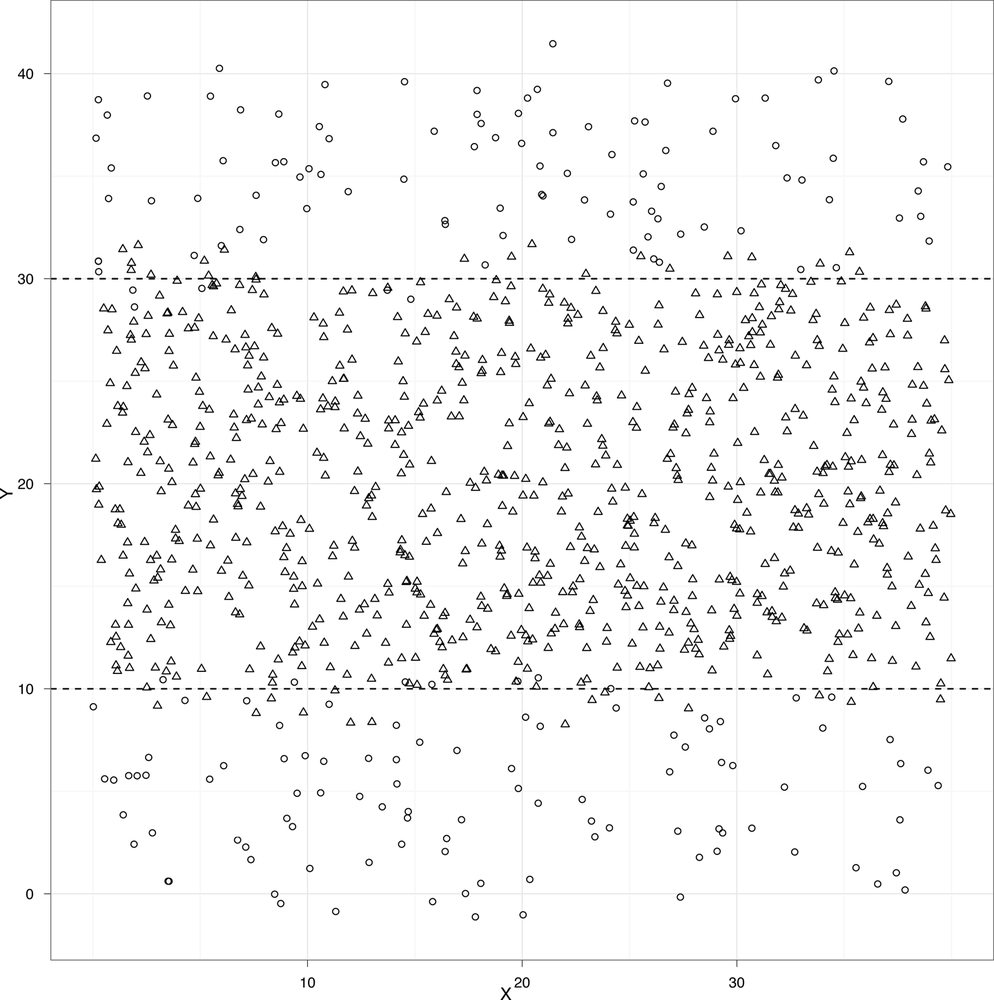Chapter 3. Classification: Spam Filtering
This or That: Binary Classification
At the very end of the previous chapter, we quickly presented an example of classification. We used heights and weights to predict whether a person was a man or a woman. With our example graph, we were able to draw a line that split the data into two groups: one group where we would predict “male” and another group where we would predict “female.” This line was called a separating hyperplane, but we’ll use the term “decision boundary” from now on, because we’ll be working with data that can’t be classified properly using only straight lines. For example, imagine that your data looked like the data set shown in Figure 3-1.

This plot might depict people who are at risk for a certain ailment and those that are not. Above and below the black horizontal lines we might predict that a person is at risk, but inside we would predict good health. These black lines are thus our decision boundary. Suppose that the open circles represent healthy people and the open triangles represent people who suffer from a disease. If that were the case, the two black lines would work quite as a decision boundary for classifying people as healthy or sick.
But before we begin to understand how these decision boundaries are determined in practice, let’s review some of the big ...
Get Machine Learning for Email now with the O’Reilly learning platform.
O’Reilly members experience books, live events, courses curated by job role, and more from O’Reilly and nearly 200 top publishers.

